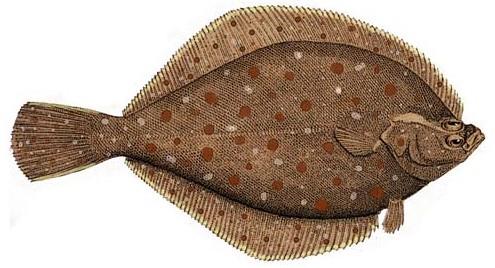

Flounder is a healthy and tasty fish that is safe for dogs to eat in moderation. It contains an abundance of omega-3 fatty acids, minerals, and proteins that benefit organ health and brain function. However, contaminant exposure in certain aquatic environments is common, and must be taken into consideration when feeding this fish to dogs.
Flounder is a nutritious meat for dogs, rich in omega-3 fatty acids and B vitamins that promote nerve and brain health. It is also a great source of protein to help with cell repair and growth, and contains magnesium and phosphorus to support organ health. This fish is low in mercury and saturated fats, making it a healthier choice compared to other options.
Flounder come from ocean environments prone to water contaminants, pollutants, and heavy metals like mercury, which can present a risk to our canine companions. Additionally, the bones can present a choking hazard or cause stomach blockage, and raw flounder may contain bacteria and parasites.
To ensure a safe and enjoyable meal for your pet, it is important to remove gills and scales and cook the flounder thoroughly. Serve your pup the cooked flesh in small quantities, after removing all bones, as an occasional treat.
Flounder is a versatile fish that's popular in various cuisines around the world, though in the US it's commonly known as sole, Plaice or dab. Originating in the waters of the Pacific, Atlantic, and Indian oceans, it can be found in markets close to these areas. Its white and delicate flesh with no dark spots makes it a great-tasting and healthy snack for dogs. Flounder is loaded with beneficial nutrients like omega-3 fatty acids, B vitamins, magnesium, phosphorus, and proteins that are essential for improving organ health and enhancing brain function. While the omega-3 fatty acids and low mercury content make it a healthier choice compared to other options, exposure to contaminants in certain water environments is something to take into consideration when offering it to dogs. The bones can also potentially cause a choking hazard or stomach blockage, and raw flounder may contain bacteria and parasites. To ensure a safe meal, it is best to remove the gills, scales, and bones before cooking and then only serve in small quantities as an occasional treat.
If flounder isn't quite for you and your pup, consider other types of fish like salmon, tuna, or trout. All of these fish provide excellent sources of protein, omega-3 fatty acids, and minerals, and can be served steamed, boiled, baked, or grilled for a tasty treat. Are you unsure about the safety of any fish? Do research and ask a veterinarian for advice before feeding your pet to ensure both a safe and enjoyable meal.
If you do decide to offer flounder as a snack, we'd love to hear about your pet's experience! How did they like it? Is your pup a fan of fish or do they prefer something else? We hope your pet had a paw-esome time and enjoyed their seafood treat!